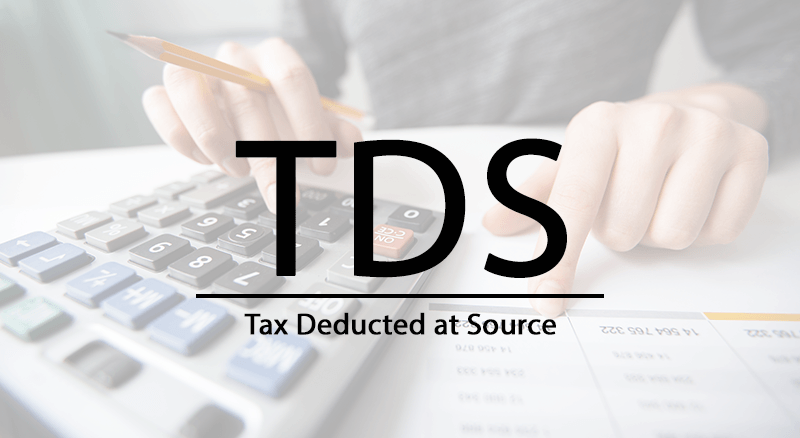Tax deduction at source (TDS) is a tax deduct by the employer from the employee’s salary for every month. The employer is legally require to collect a certain portion of the income from their employees every month. The amount so collect will be credit to the Income Tax department. If not credit in time, the Tax department will charge interest on the due amount.
At the beginning of the financial year, the small business employer collects the “investment declaration statement “ from the employees which details the investment and exempted expenses like educational expenses, rent, etc, Certain deductions under the section of 80C,80CCC,80DD,80DDB,80E,80U,80D,80G, Section 24 and Section 10 (13A) is also applied while calculating the taxable income of the employee, The employer will calculate the TDS liability calculation on the estimated year’s income minus the investment declaration furnished by the employee.
The employers have to process certain rules before applying TDS on the employee’s salary:
- They have to hold or apply a valid TAN (Tax collection and Deduction Number). TAN is very much like a PAN number except it is issue to small businesses and companies and not to individuals. TAN is a combination of 10 alphanumeric digits(alphabetical and numerical). It is a unique identification which is use by the Income Tax department to monitor or track your business financial activities.
- The form 49 B is a TAN registration form
- The small business employer must also issue Form 16 which is a TDS certificate to the employee. This certificate will include details of the total salary and the tax deducted as per the declaration furnished by the employee.
How is TDS calculated:
- First, calculate the total gross income of the employee.
- Gross total salary will include the basic salary, HRA, conveyance, medical allowances and other allowances as per the company’s policy.
- Deduct the allowances under Section 10 before proceeding to the next step.
- Add the other incomes declared by the employee like interest; rent received, etc.
- Compute the year’s total income of the employee
- Then lessen the deductions that applicable like Sec 24, and other sections like 80C,80U, etc.
- The employee has to collect the proofs for the deductions above as the Income Tax department requires them.
- Apply the tax rates as per the Income tax slab rate for the current financial year.
- After deducting the required slab of Income-tax divide the net tax payable by 12 months.
- The amount so calculate has to be deduct in equal amounts for each month of the financial year.
- It has to be remitted by the employer to the Income Tax department on or before the 7th of the following month.
- While remitting the TDS amount the employer should compulsorily quote the TAN number assigned by the Income Tax department.
- The tax so deduct should be filed every quarter with Integrate enterprises format who will then upload your quarterly return of TDS to the Income Tax department.
Due dates for filing the TDS return:
The due dates for the filing TDS ever quarter are as follows:
| FORM 24 Q FILLING DUE DATES | |
| PERIOD | DUE DATE |
| APRIL TO JUNE | 31ST JULY |
| JULY TO SEPTEMBER | 31ST OCT |
| OCTOBER TO DECEMBER | 31ST JAN |
| JANUARY TO MARCH | 31ST MAY |
In case of failure to pay TDS on time:
The responsibility of paying TDS rests with the employer and not the employee. If the employer fails to deduct the TDS by the month, then the interest of 1% will be levied on the calculated amount, If the employer fails to remit the TDS by the month, there will be a levy of interest of 1.5% on the remitted amount.
In extreme cases, where the small business owner does not pay the TDS amount until the filing of the IT return of next year, then he cannot claim the employee’s salary as an expense. It will increase the company’s Income tax liability. It is better to set up a reliable TDS system in the business with the help of accounting software both available privately or in Integrated enterprises format. The Human Resource personnel and the head of the finance department monitor this system.
Conclusion:
It is imperative that the employer maintains the investment declaration proofs submit by the employee to the Income Tax department might ask for them at any time. The Tax authorities will ask for the proofs submitted by the employee during the Income Tax assessment. Maintaining TDS is beneficial for small businesses as they reflect that the accounting system is in a status of good maintenance. As for the employee, it is beneficial as they can compute their tax liability easily.

 Start using ZapInventory today
Start using ZapInventory today
